Activities and Sports Giant Schnauzers Enjoy
Looking for sports and activities Giants enjoy, or just checking out a Giants capabilities, here are a few suggestions….
Agility
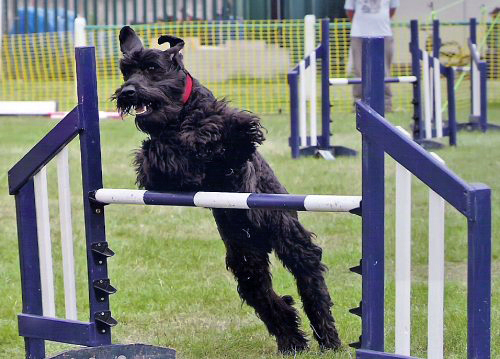
Agility is a fast and furious activity made up of a course of various obstacles for your dog to run through, jump over, and weave in and out, all against the clock. Not only does agility test your dog’s fitness, it also measures your ability as a handler to direct your dog through the course.
For anyone wishing to officially compete in agility the Kennel Club’s societies hold numerous agility competitions each year with finals also taking place at Crufts. If you decide that agility is a suitable activity for you and your dog, the next step is to receive some expert training.
To find an Agility Club visit the Kennel Club: Find a Club
Bikejoring
Bikejoring is essentially riding a bike with your dog, or dogs, pulling out in front of the bike attached to a special harness and bungee line, the line fixes to an antenna on the bike to keep it away from the front wheel. It’s not for the faint-hearted, but it’s a lot of fun and great exercise for dogs that love to run.
Canicross
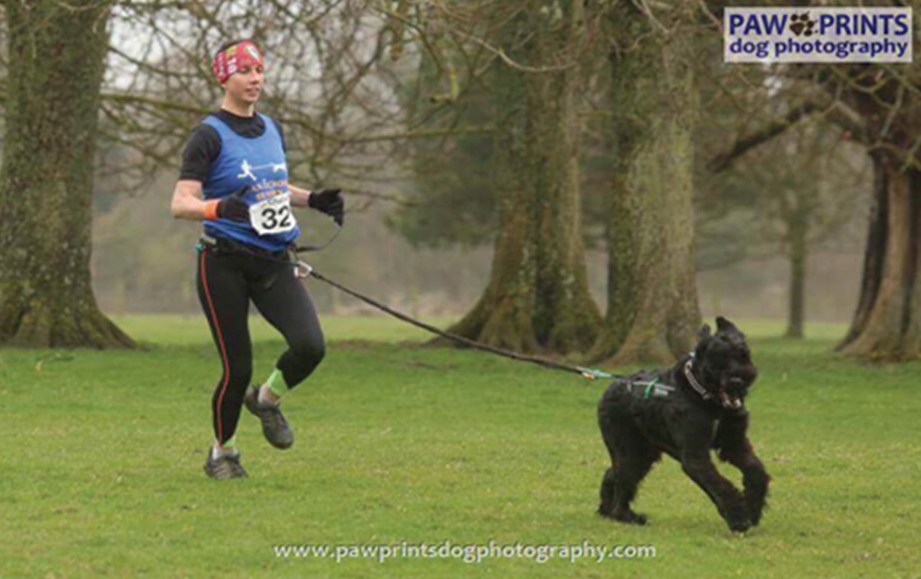 Canicross is off-road running, you don’t need to be an athlete to enjoy a run with your dog. Your dog wears a harness specifically designed to allow them to pull, which is attached to your belt via a bungee line, allowing hands-free running. There are numerous canicross clubs throughout the UK, which you can join and run with like minded people. Dedicated canicross racing events also take place.
Canicross is off-road running, you don’t need to be an athlete to enjoy a run with your dog. Your dog wears a harness specifically designed to allow them to pull, which is attached to your belt via a bungee line, allowing hands-free running. There are numerous canicross clubs throughout the UK, which you can join and run with like minded people. Dedicated canicross racing events also take place.
Dock Diving
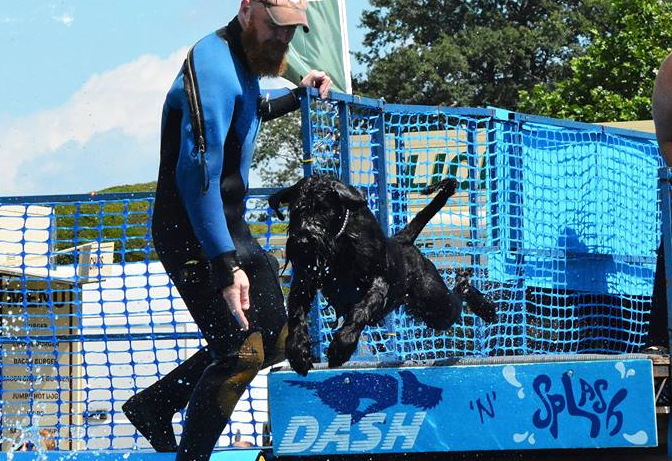 Dock Diving if your dog loves to run, jump and swim dock diving may be the activity for you. Dock Diving is a competitive event where dogs are judged on how far or how high they leap from a raised platform into water. One dog and one handler make up a team. The handler stands alongside the dog on the dock and coordinates the jump using different techniques to encourage the jump.
Dock Diving if your dog loves to run, jump and swim dock diving may be the activity for you. Dock Diving is a competitive event where dogs are judged on how far or how high they leap from a raised platform into water. One dog and one handler make up a team. The handler stands alongside the dog on the dock and coordinates the jump using different techniques to encourage the jump.
Dog Showing
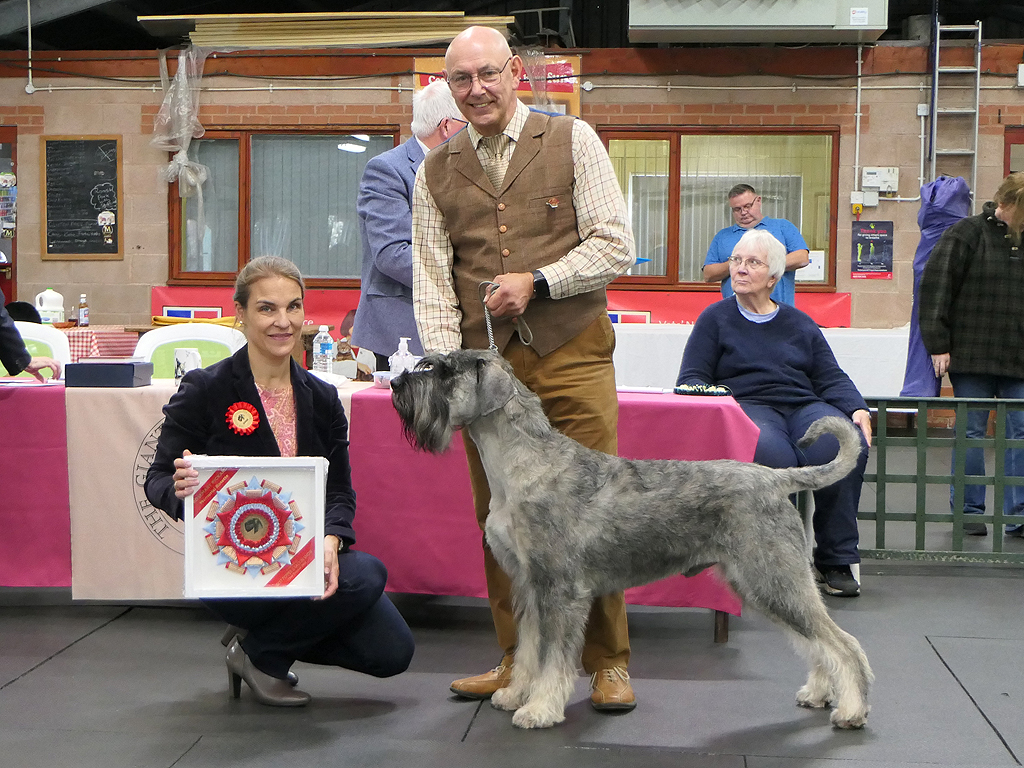 Dog Showing or exhibiting is an exciting competitive activity where dogs compete against each other for awards. It is a competition where a dog’s attributes and conformation are compared against a breed standard for the breed. Whilst it can often be taken quite seriously, it can be a fun pursuit that people and their dogs thoroughly enjoy.
Dog Showing or exhibiting is an exciting competitive activity where dogs compete against each other for awards. It is a competition where a dog’s attributes and conformation are compared against a breed standard for the breed. Whilst it can often be taken quite seriously, it can be a fun pursuit that people and their dogs thoroughly enjoy.
To start training your dog for a show there are specific training classes known as ringcraft classes where you and your dog can receive training and guidance.
To find an ringcraft class visit the Kennel Club: Find a Club
Come along to one of the Club’s Events
Hoopers
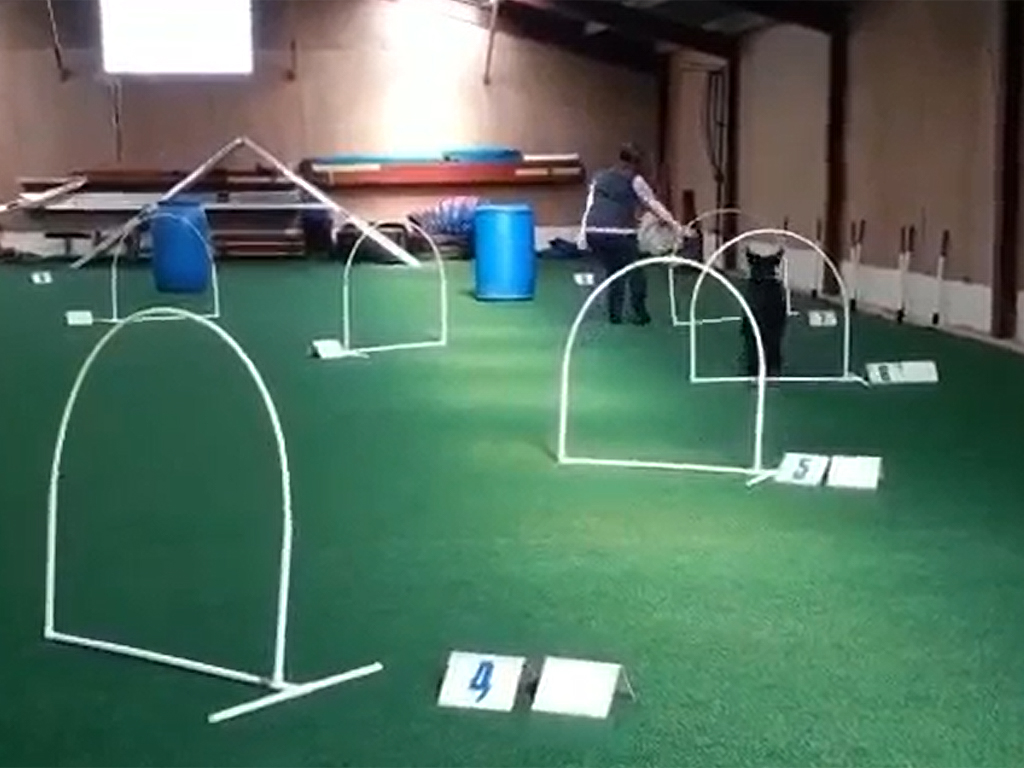
Hoopers is a low impact agility style sport high on the fun scale for dogs of any age and ability. All of the equipment is at ground level, and consists of a series of hoops, barrels and tunnels that dogs navigate with the same pace and excitement as agility. Hoopers is about distance handling, allowing your dog to think for themselves, listen and look for commands.
IGP
IGP (Previously known as IPO or Schutzhund) is a challenging three part sport (tracking, obedience and protection) which was originally designed as a breed test for the German Shepherd, and has grown in to a popular sport. The first stage is to pass the BH (Begleithund) or companion dog test which is a combination of obedience and temperament, after which there are three titles, IGP1, 2 and 3. Titles are awarded following the assessment of each dog and handler by a specialist judge. A dog must pass all three phases (tracking, obedience and protection) in a single trial with a minimum score of 70% in each phase to be awarded a title. IGP2 and IGP3 titles involved the same three phases and same minimum score but with additional exercises that become increasingly more difficult at each level.
![]() Tracking tests scentwork, concentration, and a dogs ability to apply themselves to the exercise in a specific manner throughout the test. A track is laid with three small articles over a distance, varying according to the level of the title. The handler directs their dog to follow the track on a 10 metre leash, with the dog locating and indicating each article, and the performance is evaluated by the judge.
Tracking tests scentwork, concentration, and a dogs ability to apply themselves to the exercise in a specific manner throughout the test. A track is laid with three small articles over a distance, varying according to the level of the title. The handler directs their dog to follow the track on a 10 metre leash, with the dog locating and indicating each article, and the performance is evaluated by the judge.
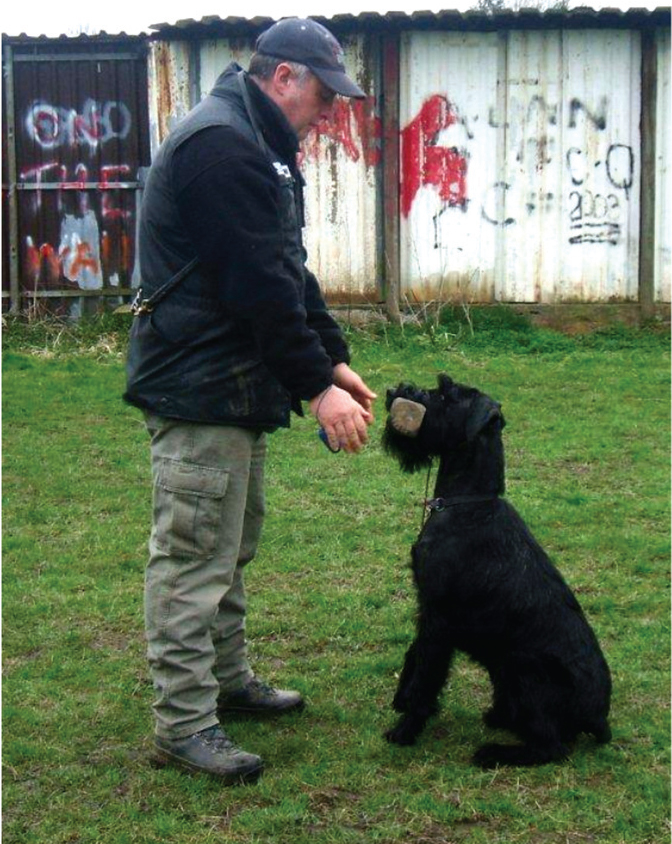 Obedience is carried out in a large field, with two dog and handler teams, one in a down position whilst the other dog works. The test involves a gun shot test, several heelwork exercises, sit, down and stand out of motion, several recalls, retrieving a dumbbell on the flat, over a 1 m hurdle and over an A frame, and a sendaway. The judge gives a grade according to speed, accuracy collaboration with the handler and enthusiasm to work.
Obedience is carried out in a large field, with two dog and handler teams, one in a down position whilst the other dog works. The test involves a gun shot test, several heelwork exercises, sit, down and stand out of motion, several recalls, retrieving a dumbbell on the flat, over a 1 m hurdle and over an A frame, and a sendaway. The judge gives a grade according to speed, accuracy collaboration with the handler and enthusiasm to work.
 Protection requires an assistant ‘Helper’ or ‘Decoy’ to test the courage of the dog to protect itself and its handler. The helper, wearing a heavily padded sleeve on one arm, carries a padded stick with which to threaten the dog. The dog, under direction of the handler, searches in hides for the helper and indicates a find by barking continuously, guarding the helper and preventing him from moving until the handler arrives. A series of further exercises follow where the helper is directed by the handler to move around the field and makes various attempts to escape, attack the dog, attack the handler and is escorted to the judge. Failure of the dog to comply with the handler’s commands results in a disqualification.
Protection requires an assistant ‘Helper’ or ‘Decoy’ to test the courage of the dog to protect itself and its handler. The helper, wearing a heavily padded sleeve on one arm, carries a padded stick with which to threaten the dog. The dog, under direction of the handler, searches in hides for the helper and indicates a find by barking continuously, guarding the helper and preventing him from moving until the handler arrives. A series of further exercises follow where the helper is directed by the handler to move around the field and makes various attempts to escape, attack the dog, attack the handler and is escorted to the judge. Failure of the dog to comply with the handler’s commands results in a disqualification.
In order to compete you will need to join a working dog club, and if you are ready to train regularly and to obtain a score book, you will need to apply for membership with the GSDL Working Dog Group
Mantrailing
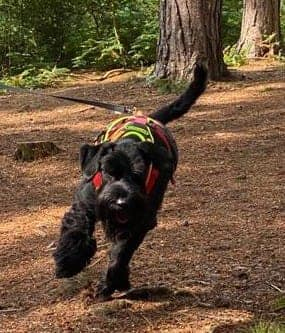 Mantrailing is a low impact sport, where dogs are trained to use their nose to follow a unique human scent trail with the aim of finding someone missing, or someone hidden just for fun. Mantrailing dogs are trained to work and think independently, and ignore all other scents whilst focusing solely on the target individual. It is a fun activity providing physical exercise, a mental workout and something you can do together as a sport.
Mantrailing is a low impact sport, where dogs are trained to use their nose to follow a unique human scent trail with the aim of finding someone missing, or someone hidden just for fun. Mantrailing dogs are trained to work and think independently, and ignore all other scents whilst focusing solely on the target individual. It is a fun activity providing physical exercise, a mental workout and something you can do together as a sport.
For more information and to find an instructor visit: Mantrailing UK
Obedience
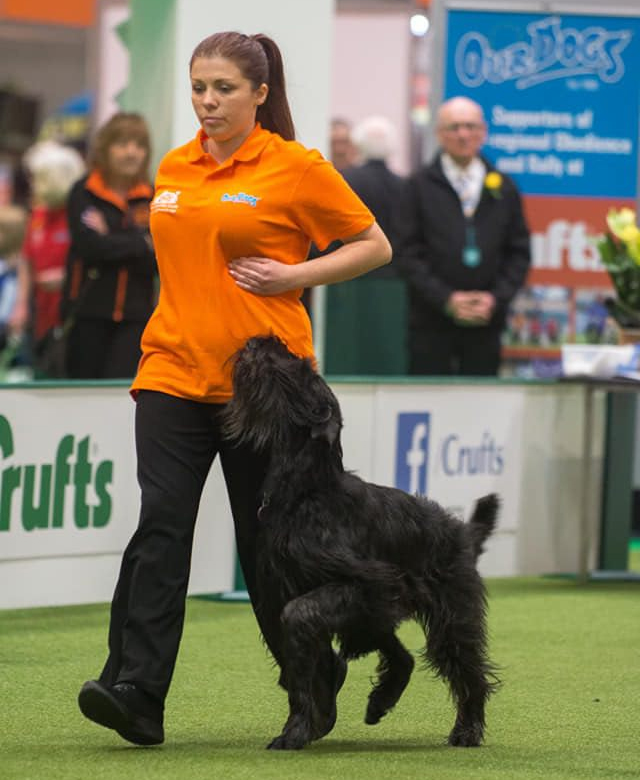 Obedience General training classes will teach you the basics and then you may decide to train towards the Kennel Club Good Citizens Scheme, consisting of four levels; puppy foundation, bronze, silver and gold awards. Alternatively you can progress to competitive obedience which publicly showcases the training you have achieved through a set of obedience tests. Exercises range from heelwork (on and off the lead), to a scent discrimination exercise.
Obedience General training classes will teach you the basics and then you may decide to train towards the Kennel Club Good Citizens Scheme, consisting of four levels; puppy foundation, bronze, silver and gold awards. Alternatively you can progress to competitive obedience which publicly showcases the training you have achieved through a set of obedience tests. Exercises range from heelwork (on and off the lead), to a scent discrimination exercise.
For anyone wishing to officially compete the Kennel Club’s societies hold numerous obedience competitions each year with finals taking place at Crufts.
To find a KC Good Citizens Training Club or Obedience Club visit the Kennel Club: Find a Club
Rally
 Rally is a dog sport based on obedience where you and your dog, working as a team, navigate a course with numbered signs indicating different exercises to perform. There are up to 18 stations along the course, requiring your dog to perform one of around 80 different preset exercises. Each individual round is performed at a brisk pace and takes around three minutes.
Rally is a dog sport based on obedience where you and your dog, working as a team, navigate a course with numbered signs indicating different exercises to perform. There are up to 18 stations along the course, requiring your dog to perform one of around 80 different preset exercises. Each individual round is performed at a brisk pace and takes around three minutes.
For anyone wishing to officially compete the Kennel Club’s societies hold numerous rally competitions each year with finals taking place at Crufts.
To find a Rally Club visit the Kennel Club: Find a Club
Working Trials
Working trials tests were originally based on training for police work, but today working trials are purely a competitive sport. It can be physically demanding, but great fun and rewarding. Dogs start at the lowest stake and move up in ascending levels, starting with the Introductory stake then Companion dog (CD), Utility dog (UD), Working dog (WD), Tracking dog (TD) to Patrol dog (PD). Exercises are divided into three sections: nosework, agility and control. They comprise of various tests, including heelwork, tracking, searching for hidden items, jumps and retrieve.
Nosework involves search and track exercises. The dog follows an aged track laid by an unknown ‘tracklayer’ approximately half a mile long, laid on grassland, arable fields or heathland with each competitor working on similar terrain to others in the stake. Along the track the dog must find and recover a number of articles depending on the stake. The other component of the nosework section is ‘search’ where the dog has 5 minutes to search for 4 articles of the judges choice, and bring them back to the handler who is not allowed to enter the search area.
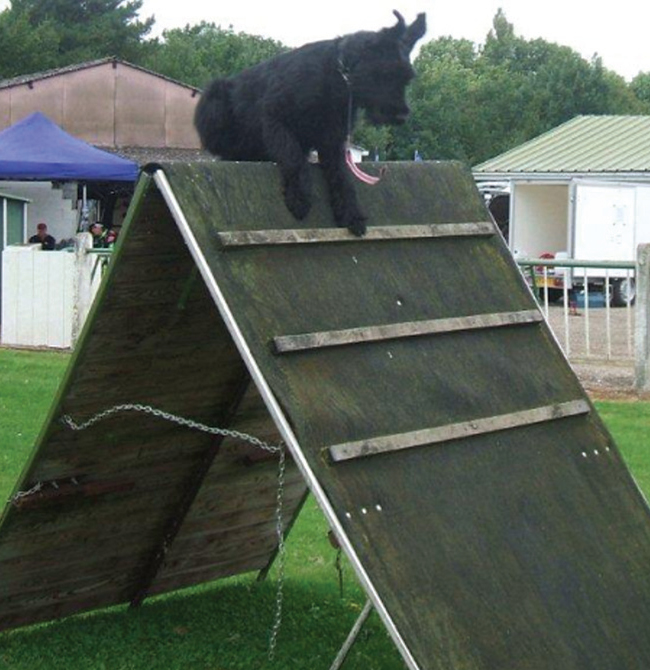 Agility is tested by the dog clearing three obstacles – a three-foot hurdle, a six-foot-high wooden scale and a nine-foot long jump. Two attempts may be permitted for each obstacle at the judges discretion. In the Introductory stake all jumps are decreased in size to help the novice dog.
Agility is tested by the dog clearing three obstacles – a three-foot hurdle, a six-foot-high wooden scale and a nine-foot long jump. Two attempts may be permitted for each obstacle at the judges discretion. In the Introductory stake all jumps are decreased in size to help the novice dog.
Control consists of various exercises:
- Heelwork; stay close while handler is directed by a steward at fast, slow and normal pace.
- Sendaway; minimum distance 50 yards, and in the higher stakes, redirect the dog with one command.
- Retrieving a dumbbell
- Recall to the handler in Introductory stake and CD
- Down stay; while the handler is out of sight for a period of time
- Sit stay: only in lower stakes
- Steadiness to gunshot; penalised for any signs of fear or aggression
- Speak and cease on command with minimum commands/signals
Working Trials Societies hold Open and Championship Working Trials in a number of venues around the country. To find a Working Trial Club visit the Kennel Club: Find a Club

